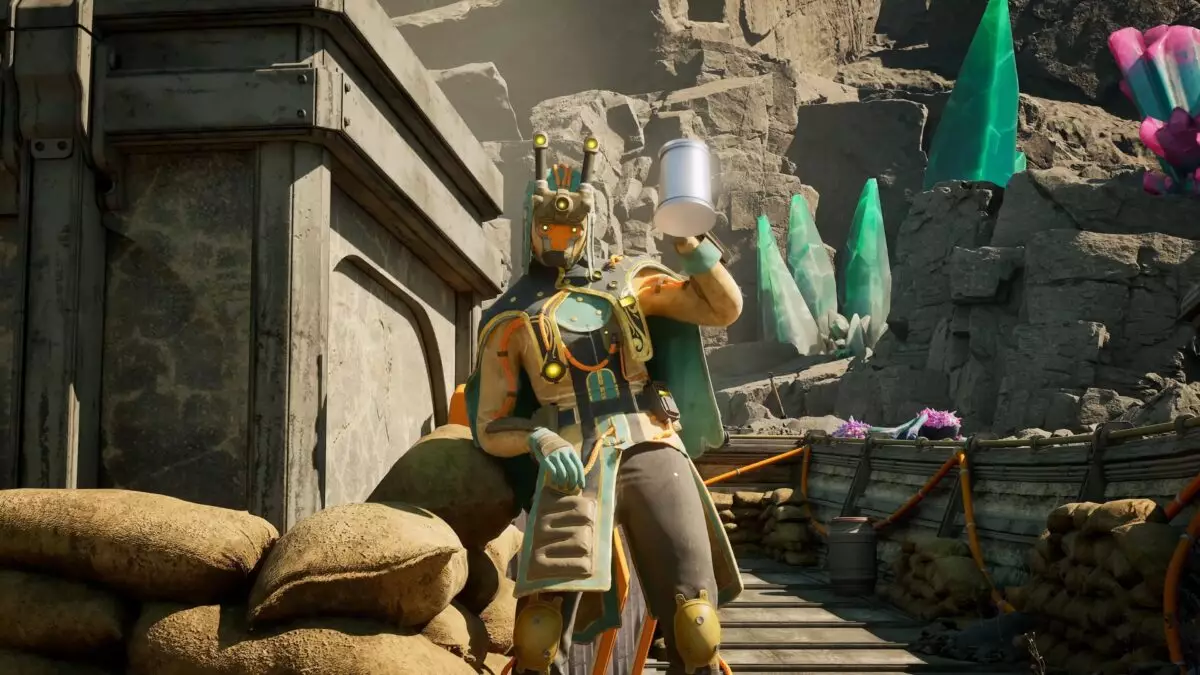The Outer Worlds arrived with a promise to shake up the RPG landscape, yet it ultimately fell short of expectations for many dedicated fans. While it received praise for its witty writing, distinctive aesthetic, and narrative choices, it didn’t revolutionize the genre as some might have hoped. Instead, it presented a familiar experience—a polished, engaging RPG that borrowed elements from Fallout: New Vegas and other CRPG classics without fully carving out new territory. This lukewarm response left fans and critics questioning whether Obsidian could ever again craft a game that truly pushes the envelope for role-playing games.
What’s crucial to understand is that the stickiness of The Outer Worlds’ impact wasn’t necessarily rooted in its gameplay innovations but perhaps in the industry’s hunger for something bolder. Obsidian’s gamble felt restrained; they played it safe, focusing on narrative and world-building rather than deep RPG systems or groundbreaking mechanics. As a result, the game felt more like a confident sequel in story than a new step forward in role-playing sophistication.
The Changing Landscape and the Aspirations for Outer Worlds 2
Recent insights into The Outer Worlds 2 reveal a company more daring and self-assured. Previews suggest that the sequel aims to be a denser, more ambitious RPG, inspired by the resurgence of the genre’s more complex iterations—like Baldur’s Gate 3. Producer comments highlight a desire to incorporate “crunchy,” mechanics-rich systems that allow players to approach quests in varied ways, mirroring the deeper role-playing options that classic CRPG fans cherish.
Yet, the true significance of this shift isn’t just about implementing intricate mechanics; it’s about reclaiming the genre’s rebellious spirit. Obsidian’s creative director Leonard Boyarsky’s comments echo a frustration with the perception—an assumption that RPGs are merely “elements” layered into games rather than the core design philosophy. Now, buoyed by the success of Baldur’s Gate 3 and other contemporary titles, Obsidian feels empowered to put their RPG roots front and center, emphasizing player agency and systemic depth.
This evolution isn’t happening in a vacuum. It responds to a broader industry trend where players are increasingly hungry for immersive, systems-driven experiences that challenge them to think critically and strategize. Titles like Kingdom Come Deliverance 2 and Elden Ring exemplify this appetite, although they differ in tone and style from traditional CRPGs. Both demonstrate that audiences crave worlds where depth and player choice are integral, not afterthoughts.
From Potential to Transformation
The renewed focus on rich gameplay systems signals a fundamental shift in how Obsidian approaches their projects. They recognize that modern gamers aren’t satisfied with mere narrative hooks—they want meaningful interactions, tactical choices, and complex character development. This is where The Outer Worlds 2 could succeed or falter.
If Obsidian capitalizes on this momentum, the sequel could serve as a turning point for the genre—showing that well-crafted, system-heavy RPGs are not only marketable but essential to the future of the medium. The budget boost from Microsoft gives them the resources to realize this vision fully, sparking hope that their ambitions won’t be limited by corporate conservatism or industry fatigue.
However, skepticism remains a possibility. The challenge lies in balancing complexity with accessibility. Overloaded systems risk alienating newcomers, while oversimplification undermines the very depth the developers aspire to bring to the table. Achieving this delicate balance will determine whether The Outer Worlds 2 becomes a true game-changer or just another game caught in the endless cycle of incremental updates.
Redefining the Role of RPGs in Modern Gaming
What’s truly exciting about this upcoming chapter is the potential to redefine what it means to craft a memorable role-playing game. The industry’s recent successes show that players crave authenticity—games that respect their intelligence and offer meaningful choices. While not every successful RPG needs to emulate the complexity of D&D or the grandeur of Baldur’s Gate, they must at least honor the core principles of freedom, depth, and consequence.
Obsidian’s renewed confidence stems from an understanding that the essence of a great RPG lies not just in storytelling but in empowering players to forge their own paths. The hope is that The Outer Worlds 2 will break free from the franchise’s previous limitations and embrace a broader, more mature vision—one where gameplay mechanics serve as the backbone of an immersive, player-centric experience.
If the company stays true to this philosophy, the game could serve as a catalyst, inspiring other developers to incorporate richer RPG systems into their titles. The future of the genre depends on developers daring to innovate beyond the safe confines of formulaic storytelling and surface-level choices. Obsidian’s focus on systemic depth might just be the spark that rekindles a renaissance of meaningful role-playing, making The Outer Worlds 2 not just a sequel but a milestone in gaming history.

